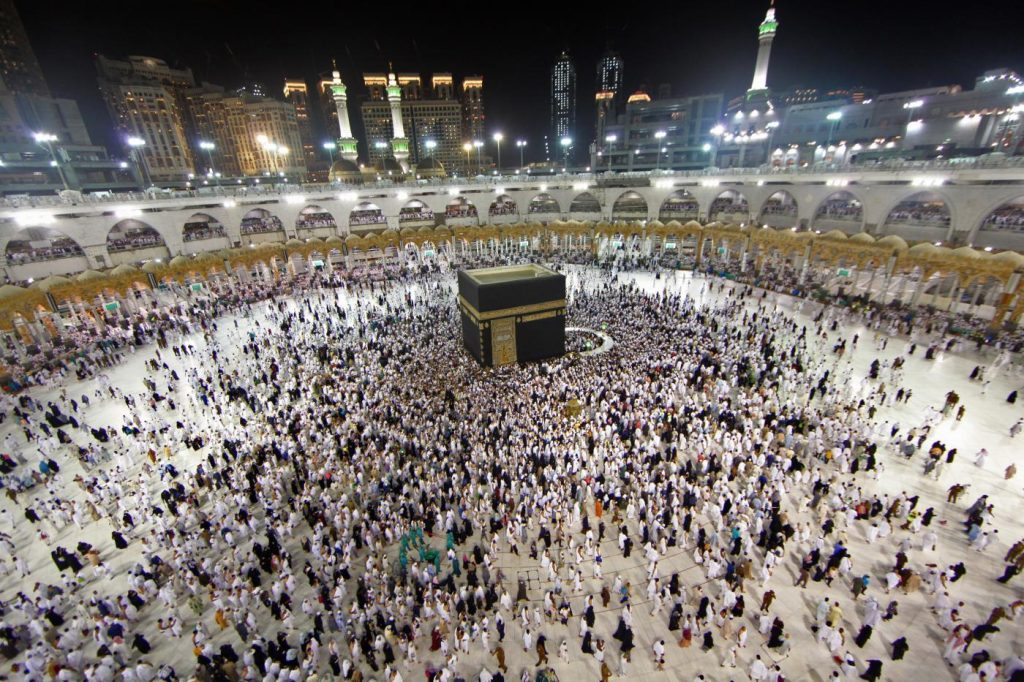Umrah
Umrah- What is Umrah?
Umrah is a pilgrimage to the holy city of Makkah, performed by Muslims at any time of the year. Unlike the Hajj, which is performed during the specific Islamic month of Dhu al-Hijjah, Umrah can be performed at any time of the year.
Here are some key aspects of Umrah:
- Ihram: Umrah begins with the pilgrim entering into a state of Ihram, which involves a specific dress code and a set of restrictions. Men must wear two pieces of unstitched white cloth, while women can wear any modest clothing that covers their entire body except for the face and hands.
- Tawaf: The pilgrim performs Tawaf, which involves circumambulating the Kaaba seven times in a counter-clockwise direction while reciting prayers.
- Sa’i: The pilgrim performs Sa’i, which involves walking seven times between the hills of Safa and Marwa, following the footsteps of Hagar, the wife of Prophet Abraham.
- Shaving or Cutting Hair: After completing the Tawaf and Sa’i, the pilgrim shaves or cuts a small amount of hair from their head, marking the completion of the Umrah rituals.
- Optional Acts of Worship: The pilgrim may also choose to perform other optional acts of worship, such as visiting the Prophet’s Mosque in Medina or performing additional prayers in the Masjid al-Haram.
Umrah is a deeply spiritual and transformative experience for Muslims, as it allows them to deepen their connection with Allah and strengthen their faith. It is also an opportunity for Muslims from all over the world to come together in one place and demonstrate their unity and devotion to Islam.

How To Perform Umrah?
Performing Umrah involves several steps, here is a general guideline on how to perform Umrah:
- Enter into a state of Ihram: Before entering the holy city of Makkah, pilgrims must enter into a state of Ihram, which involves a specific dress code and a set of restrictions. Men must wear two pieces of unstitched white cloth, while women can wear any modest clothing that covers their entire body except for the face and hands.
- Perform Tawaf: After entering the Masjid al-Haram, the pilgrim performs Tawaf, which involves circumambulating the Kaaba seven times in a counter-clockwise direction while reciting prayers. The pilgrim should start at the Black Stone (Hajr-e-Aswad) and end at the Black Stone.
- Perform Sa’i: After completing Tawaf, the pilgrim performs Sa’i, which involves walking seven times between the hills of Safa and Marwa, following the footsteps of Hagar, the wife of Prophet Abraham. Pilgrims start at Safa and end at Marwa.
- Shave or cut hair: After completing Sa’i, the pilgrim shaves or cuts a small amount of hair from their head, marking the completion of the Umrah rituals.
- Optional acts of worship: The pilgrim may also choose to perform other optional acts of worship, such as visiting the Prophet’s Mosque in Medina or performing additional prayers in the Masjid al-Haram.
It is important to note that there are different opinions and recommended practices among Islamic scholars regarding the specifics of performing Umrah, such as the time of day to perform the rituals or the specific prayers to recite during Tawaf and Sa’i. Therefore, it is recommended to seek guidance from a knowledgeable Islamic scholar or a Hajj/Umrah tour operator for more detailed instructions on performing Umrah.
